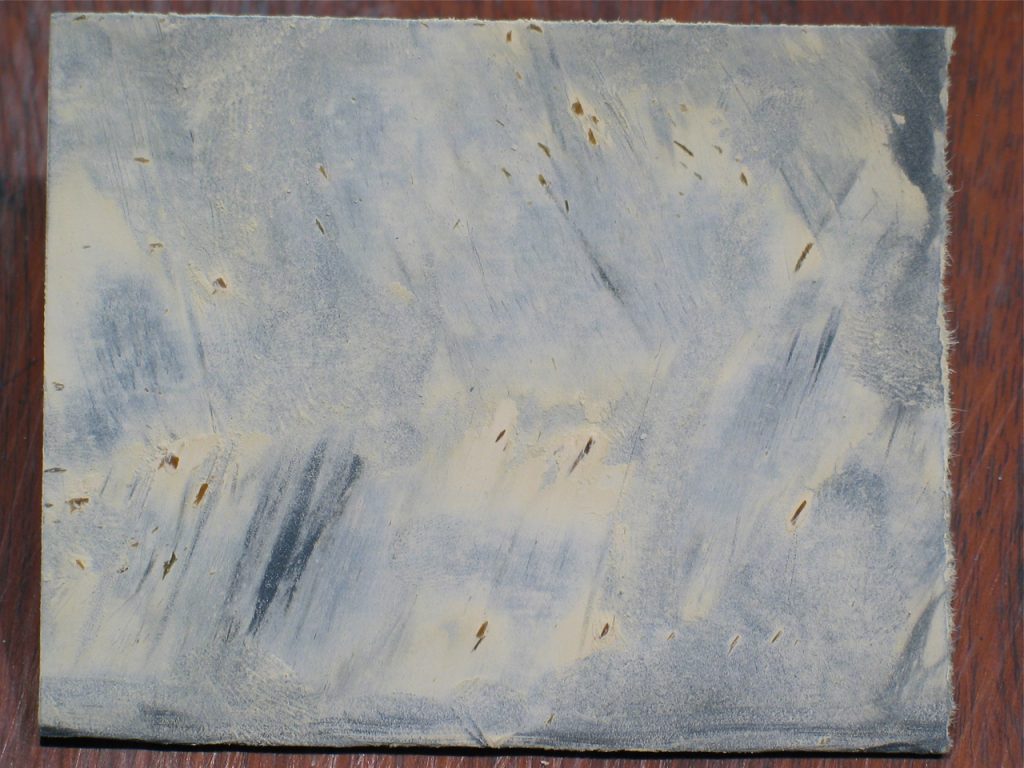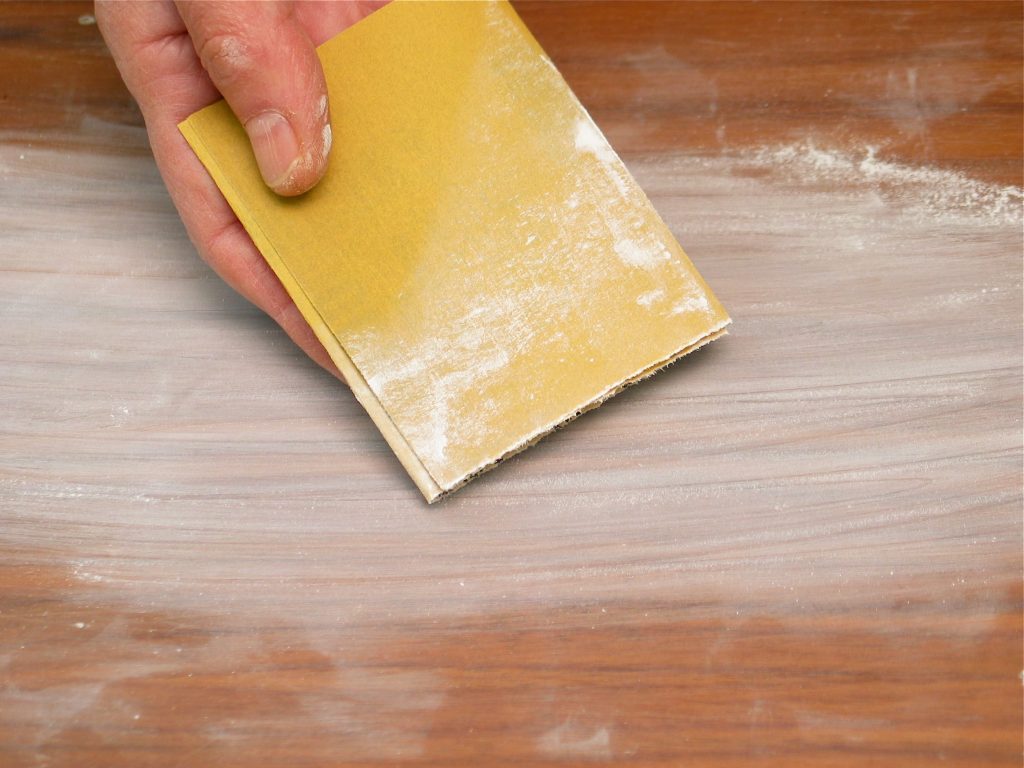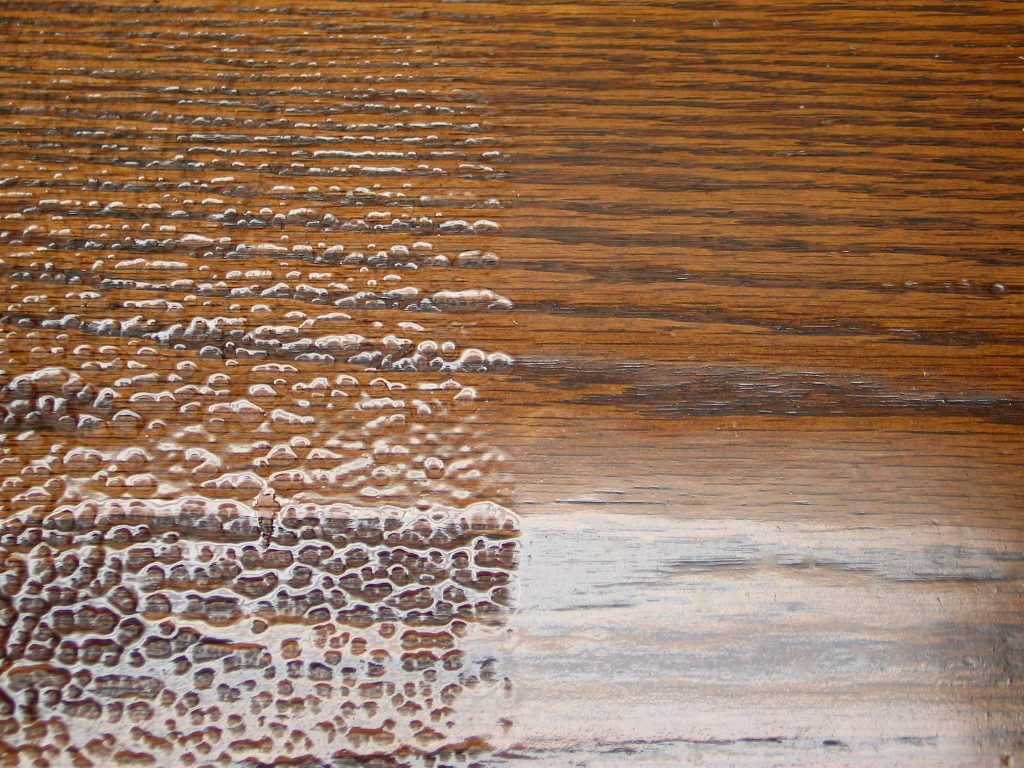We may receive a commission when you use our affiliate links. However, this does not impact our recommendations.

Alkyd varnish and nitrocellulose lacquer gum up sandpaper when sanded.
A reader wanted to know if he should apply a lacquer sanding sealer on some wood that had had a coat of shellac already applied. He intends to continue with topcoats of lacquer.
There is so much confusion about sealing wood. I’m not sure why this is. Maybe it’s the name “sanding sealer,” with instructions to seal the wood with this product before continuing with the finish (usually lacquer or varnish). Maybe it’s due to so many editors and readers of Popular Woodworking saying that shellac is the “best” sealer. Whatever the reason, the term “sealing” is very simple to understand. It’s just the stopping up of the pores in wood so that liquids, including more coats of finish, have difficulty penetrating. The wood is sealed. Any liquid that turns to a solid, meaning any finish, will seal the wood.
So what is sanding sealer? It’s just varnish or lacquer with zinc stearates added to make it powder when sanded. The stearates are a type of soap. It’s easy to picture that if you add enough powdered soap to a finish, it would powder when sanded. (Manufacturers do this, not you.) These stearates are also added to some sandpapers to make them sand easier without gumming up. Manufacturers use all sorts of names for their stearated sandpapers, just to make our lives harder.
As it happens, regular alkyd varnish and nitrocellulose lacquer gum up sandpaper when sanded. Other varnishes, such as polyurethane varnish, don’t gum up sandpaper, so they sand easily without the need of a sanding sealer. (In fact, sanding sealer will hinder the bond of polyurethane, so you shouldn’t use it.)
Think of sanding sealer as a production tool. If you’re finishing large objects such as a set of kitchen cabinets, it will speed your work. Sanding smooth will be easier before applying the topcoats of varnish or lacquer. But on smaller objects you could just use the finish as the sealer coat. It might not be worth the trouble to use the sanding sealer.

Sanding sealer powders when sanded, so it speeds production.
How about shellac? It doesn’t sand as easily as sanding sealer, though easier than alkyd varnish or lacquer. But it does other things as a sealer coat that you may want or need. Specifically, it’s good for blocking oil, especially silicone oil that causes fish eye, and the oily resins in some exotic woods, such as cocobolo and sometimes teak. It also blocks wax that is sometimes added to paint strippers and will cause finish bonding problems if you don’t get it all removed. And it blocks odors, such as those from cat urine.

Shellac sealer, applied to the right half, blocks silicone oil so the lacquer doesn’t fish eye (left half).
What about the question? Is it OK to apply a sanding sealer over a first coat of shellac? Yes, this shouldn’t cause a problem, though I don’t know why you would do it. The wood is already sealed with the shellac. Just continue with the coats of lacquer right over the shellac.
Read more from Flexner on the compatibility of various finishes.
Take control of finishing by learning how to use the many finishes available — and what those products actually are. In Flexner on Finishing, his first since Understanding Wood Finishing, Bob Flexner delves deeper into many of the issues woodworkers struggle with and he does it with an authority that leaves no doubt.
Here are some supplies and tools we find essential in our everyday work around the shop. We may receive a commission from sales referred by our links; however, we have carefully selected these products for their usefulness and quality.









